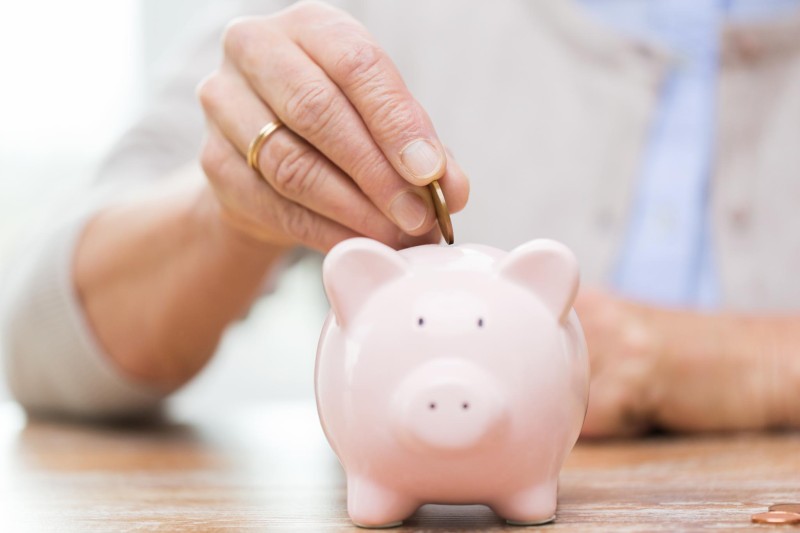Identifying Risks and Preventing Falls for Older Adults
Winter weather can be beautiful, but along with the picturesque snow comes the less ideal increase to falls caused by ice and slush. While falls can be dangerous for people of all ages, they are a particular risk to older loved ones. According to the CDC Injury Center, around 25 percent of adults aged 65 and over will experience a fall over the course of a year. These falls are the cause of more than 2.8 million injuries that require hospital treatment, such as hip fractures and traumatic brain injury, resulting in over 800,000 hospitalizations and more than 27,700 deaths annually.
If a loved one is injured or hospitalized because of a fall, this can have a staggering impact on their finances, as well as their physical and mental health. Hospital bills and the fear of falling again can add to their stress, and even lead them to neglect daily activities or refuse to leave the home in order to avoid another accident.
What can contribute to an increased risk for falls?
- Age: Older adults 65 and older are at the greatest risk, and this risk increases with each year. According to a CDC report, 37 percent of adults aged 85 and over reported a fall, which is 10 percent more than adults in the 65 to 74 category.
- Balance and mobility issues
- Chronic conditions: Dementia, Parkinson’s, arthritis and stroke are examples of common chronic conditions that increase the risk of falls.
- Memory impairment
- Muscle weakness
- Vision loss
- Environment: Tripping hazards are not only present in the home, but outside as well. Areas with uneven pavement, unstable stairs, wet floors, unseen curbs, etc., can pose serious fall risks.
- Medication side effects
- Depression
- Past history of falls
This time of the year is particularly dangerous, especially for older adults, who are more likely than any age category to fall in the winter. Many times, ice on streets or sidewalks is difficult to see, or is covered by snow. Snow tracked into the home can also melt and create slippery puddles in rooms and hallways.
How can falls be prevented?
Many falls are preventable. For caregivers, it’s important to be aware of what the risks are and identify ways to lessen them. Here are a few pointers that may help us keep our loved ones safe and fall-free:
- Discuss fall risks with their doctor: We shouldn’t wait for a fall to happen before approaching the subject with a doctor. We can ask them about the side effects of a loved one’s medications that may increase the risk of falling, as well as if the combination of multiple prescriptions will affect this risk. We should also bring up questions specific to a loved one’s individual health conditions. Their doctor will be able to offer suggestions and possible interventions to navigate a loved one’s unique situation.
- Encourage physical activity: Regular exercise can help offset risks caused by muscle weakness and certain chronic conditions such as Parkinson’s. Physical activity can also improve balance and gait, which can be key in preventing falls. There are several exercise videos and classes designed specifically for older adults from organizations such as SilverSneakers and More Life Health that might be appropriate for a loved one. However, we should be sure to consult a loved one’s doctor first to make sure exercising is appropriate and safe for them.
- Schedule an eye exam: Vision loss and outdated eyewear/contact prescriptions can significantly contribute to a risk for falls. We can check in with a loved one’s eye doctor and make sure their vision is in good shape. It’s also a good idea to request tests for cataracts and macular degeneration, which are common in older adults.
- Assess their environment: Fall risks can exist in every area of the home from the bathroom to the basement and the porch to the stairs. The challenging thing is that not all of these risks are obvious or, in some cases, even visible. Certain organizations can send in professionals specializing in aging to asses a loved one’s home for us, or we can use home assessment tools and checklists as guides for our own thorough investigation. We should be sure to consider:
- Lighting
- The presence of clutter and cords
- The stability of stairs, handrails and step stools
- Whether carpets and throw rugs are loose, torn or uneven
- Traction of floors
- Height of shelves
- Invest in assistive devices: Grab bars, non-slip treads, raised toilet seats and shower benches can all help lower the risk of falls, when installed properly.
- Take extra precautions during winter: Some measures we can take include:
- Investing in a pair of boots or shoes with good traction for a loved one
- Salting walkways or driveways before expected snowfall. If we don’t have rock salt, kitty litter and sand can also work.
- Clearing paths of snow and ice before a loved one leaves the home.
- If parking lots are icy, pulling up to building entrances to drop off a loved one near the door, if this is allowed and if a loved one is able to be left alone while we park.
- Walking slowly. If a loved one sees us rushing, they might do the same to keep up with us.
- If there are icy conditions when a loved one is expected to leave the home for an errand or appointment, in many cases it might be best to postpone, cancel or reschedule for a loved one’s safety.







